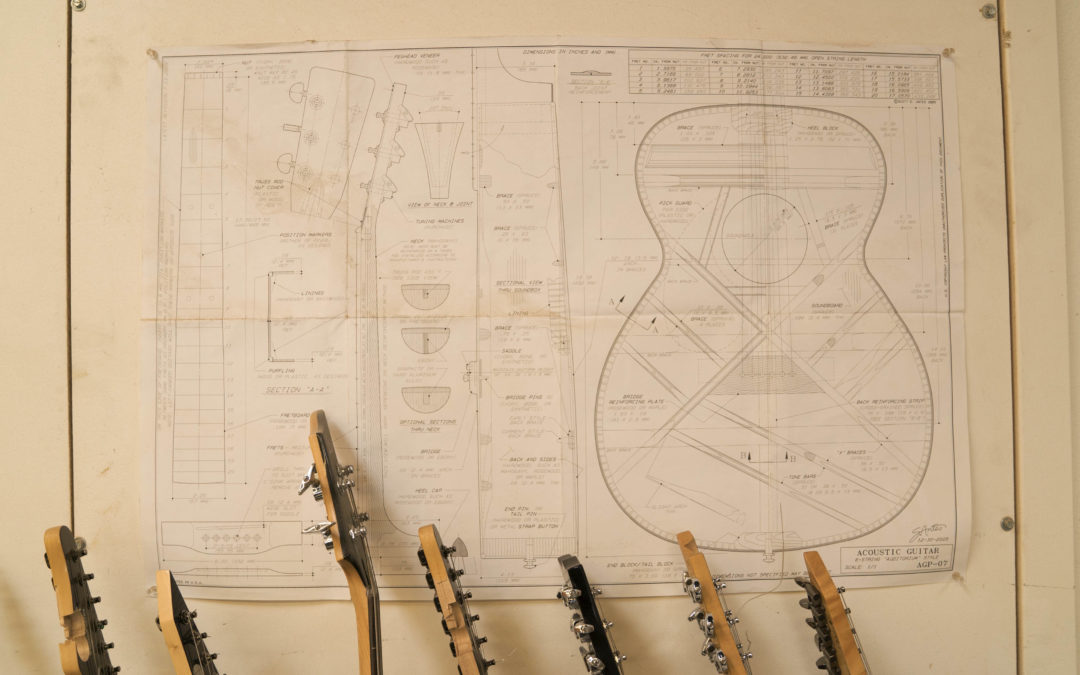From headstock to body, we take a look at the different pieces that comprise a guitar.
The guitar is arguably one of the most beautiful instruments out there, and when you listen to music aficionados describe it, you’d be forgiven for thinking they were describing a fine wine. To get to grips with one of the world’s most played instruments, we take a look at the parts that make a whole lot of great music.
Anatomy of the Guitar:
Body
The body is the part of the guitar that consists of the sound box (acoustic or classical guitar) or the different pickup combinations (electric guitar). It is made from different types of wood such as rosewood, maple or walnut. Different types of wood produce different sounds.
The body can be hollow, semi-solid or solid, depending on the artist’s choice and where the guitar will be used the most.

Blog Post
"*" indicates required fields
By submitting this form, I authorize Musicians Institute (MI) to make or allow the placement of calls, emails, and texts to me at the phone number that I have provided, including through the use of automated technology, or a prerecorded or artificial voice. I understand that I am not required to provide my phone number as a condition of purchasing any property, goods, or services. I agree to the terms of MI’s Privacy Policy. MI will not sell or rent your information to third parties, and you may unsubscribe at any time.
Cutaway and rounded are the two common body shapes found in acoustic guitars. Electric guitars can have single cutaway, like the Les Paul, or double cutaway like the Stratocaster.
The guitar also consists of the bridge and the tailpiece. Both ensure that the strings are held in place. In electric guitars, the pickups are present in the region between the bridge and the neck.
Neck
The neck is where the finger movements take place across the string. The neck is divided into slots called frets; a string strummed while pressed down on a particular fret plays a certain note. The tuning of the guitar determines the note played by each fret. Most guitars have inlays on the frets to indicate which fret number is being played. Some guitars have a truss rod inside the neck for better stability, and helps keep it steady during weather changes.

Headstock
The headstock can be found at the top of the neck. The headstock consists of tuning keys around which the strings are tightly wrapped. Each string is tuned to a different note depending on the type of music being played and the musician’s preference.
EADGBE (top to bottom) is the standard tuning on any guitar, and it is done by adjusting the tuning keys. The model and manufacturer’s name can also be found on the headstock. The headstock is the most sensitive part of the guitar and should be handled with care.
Strings
Strings can be made from either steel or nylon. Acoustic and electric guitars all have strings made of steel while classical guitars have strings made of nylon. Nylon strings are gentler on the fingertips, and is often the guitar of choice for many fingerstyle guitarists. The strings are numbered from bottom to top with the bottom one being the thinnest.
Pick
A pick is a small flat triangular plastic that is used to strum the guitar. Picks vary in thickness and in some cases material. Most guitarists prefer using a pick. Fingerstyle guitarists prefer plucking strings with their bare fingers, or grow their nails slightly longer to create a stronger and more clearly defined sound.
Understanding the different parts of a guitar is the first step towards mastering the instrument. Speaking of masters. Here’s a look at MI Online’s Scott Henderson demonstrating how he has mastered the guitar.
Check out MI’s Guitar Craft program if you’re interested in the furthering your knowledge of guitar anatomy so you can build your own!

